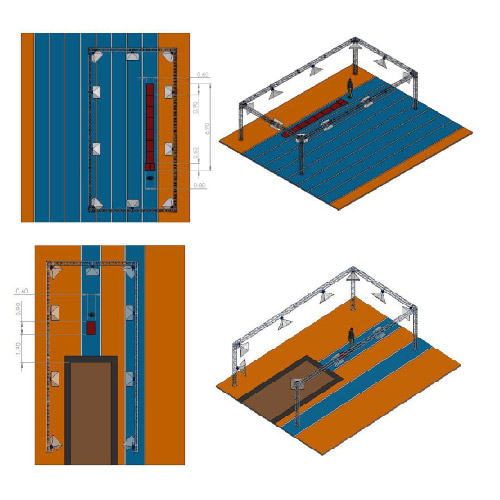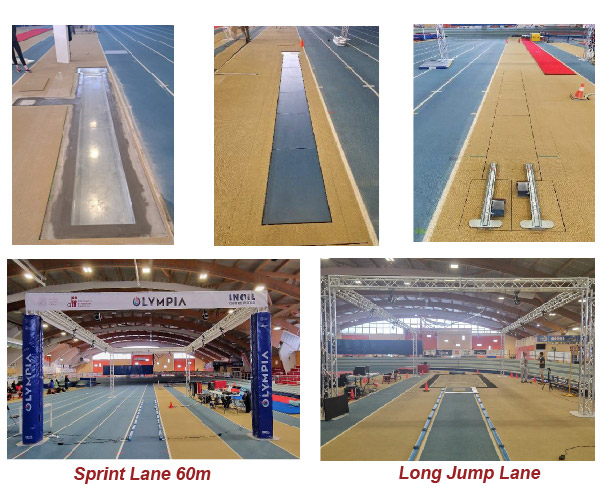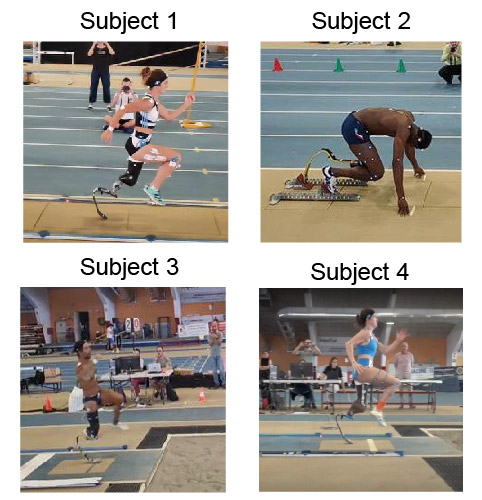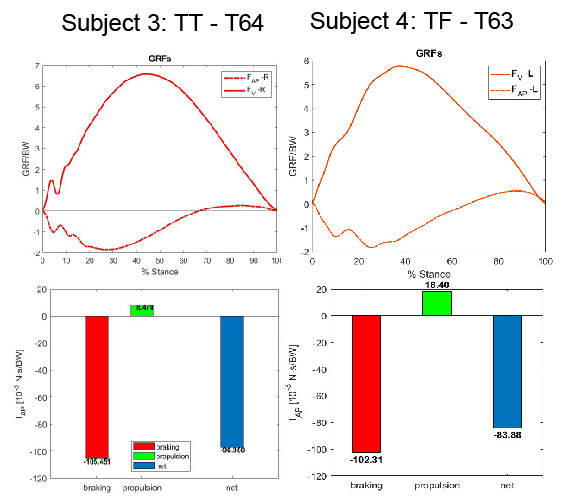THE OLYMPIA SMART TRACK
PALAINDOOR – PADOVA – ITALY
The investigation of the running biomechanics requires synchronized kinetic and kinematic measurements. The most versatile approach to analyse running biomechanics is the use of force platforms integrated with a motion capture system. This approach allows collecting data from both limbs during natural sprinting. The introduction of Running-Specific Prostheses (RSP) in Paralympics has enabled athletes with lower-limb amputations to compete in sprinting and long jumping. Kinetic data could be collected using different approaches, such as instrumented treadmills [1], instrumented tracks [2] or RPF instrumented with a set of calibrated strain gauge bridges [3]. Outcomes of such analyses allow prostheses tuning and improvement in athletes’ performance and training. The Olympia sensorized track supports the selection of RSP, its alignment and tuning for the improvement of athlete’s performance and training.
MATERIALS AND METHODS
The new sensorized Olympia 60m track, placed at the Palaindoor of Padova, is the result of the collaboration between the Department of Industrial Engineering of University of Padova, INAIL – Prosthetic Centre and the City of Padova. The “Olympia” project aims to investigate and develop innovative technological solutions to improve the performance of Paralympic athletes and their safety during sport activities.

Design

Construction

Instrumentation

Validation

kinetic results - Steady State Running

Kinetic results long Jump
The sensorized OLYMPIA track is a unique installation suitable for investigation of performance and running technique; it is available for research on Olympic and Paralympic athletes for the analysis of kinematic and kinetic biomechanical parameters during block start, acceleration, steady-state running and long jump.



